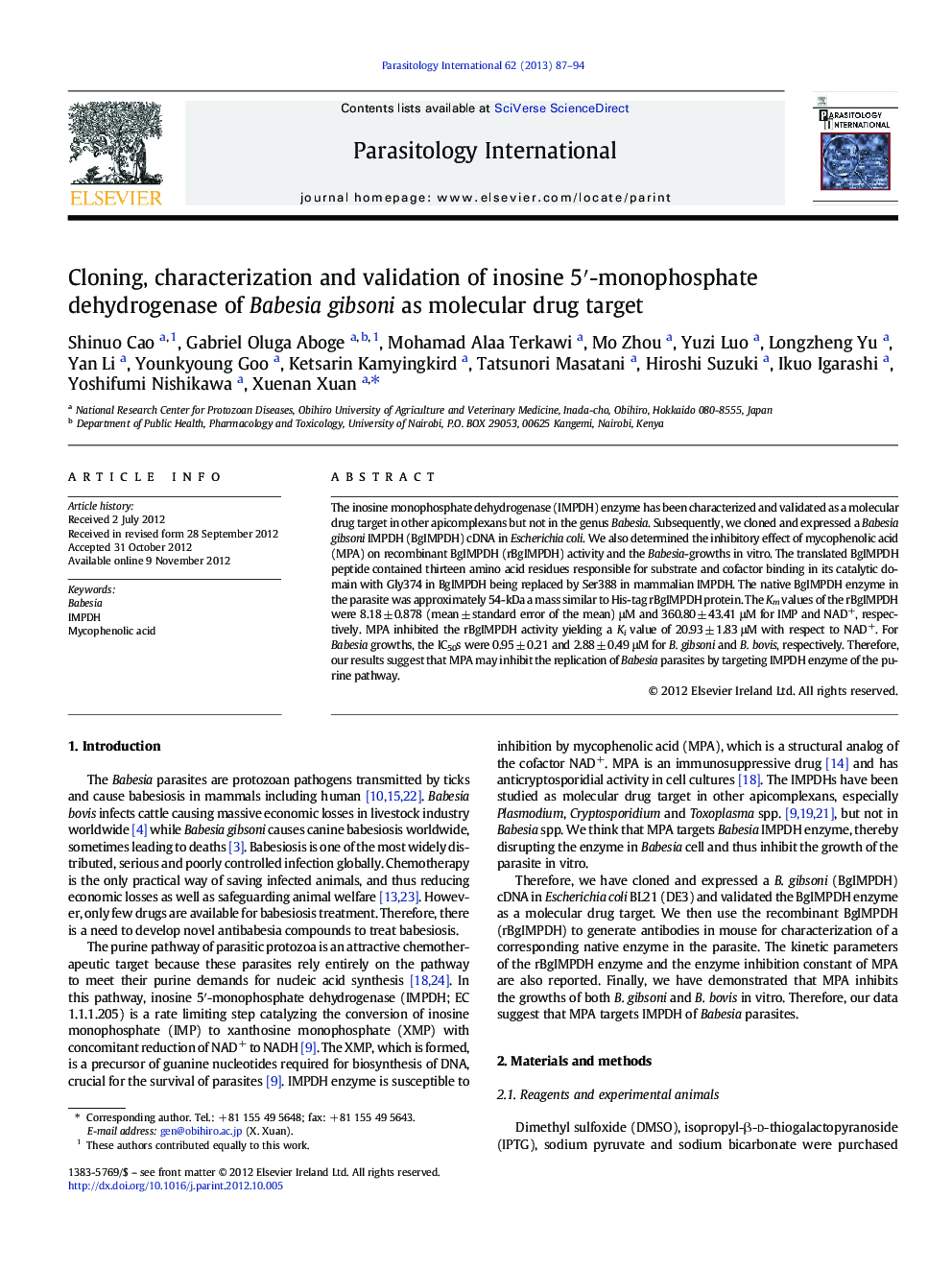| Article ID | Journal | Published Year | Pages | File Type |
|---|---|---|---|---|
| 3417816 | Parasitology International | 2013 | 8 Pages |
The inosine monophosphate dehydrogenase (IMPDH) enzyme has been characterized and validated as a molecular drug target in other apicomplexans but not in the genus Babesia. Subsequently, we cloned and expressed a Babesia gibsoni IMPDH (BgIMPDH) cDNA in Escherichia coli. We also determined the inhibitory effect of mycophenolic acid (MPA) on recombinant BgIMPDH (rBgIMPDH) activity and the Babesia-growths in vitro. The translated BgIMPDH peptide contained thirteen amino acid residues responsible for substrate and cofactor binding in its catalytic domain with Gly374 in BgIMPDH being replaced by Ser388 in mammalian IMPDH. The native BgIMPDH enzyme in the parasite was approximately 54-kDa a mass similar to His-tag rBgIMPDH protein. The Km values of the rBgIMPDH were 8.18 ± 0.878 (mean ± standard error of the mean) μM and 360.80 ± 43.41 μM for IMP and NAD+, respectively. MPA inhibited the rBgIMPDH activity yielding a Ki value of 20.93 ± 1.83 μM with respect to NAD+. For Babesia growths, the IC50s were 0.95 ± 0.21 and 2.88 ± 0.49 μM for B. gibsoni and B. bovis, respectively. Therefore, our results suggest that MPA may inhibit the replication of Babesia parasites by targeting IMPDH enzyme of the purine pathway.
Graphical abstractFigure optionsDownload full-size imageDownload as PowerPoint slideHighlights► Molecular characterization of B. gibsoni IMPDH as a potential drug target against babesiosis ► The recombinant BgIMPDH exhibited good enzymatic activity. ► MPA inhibited the activity of rBgIMPDH and growths of B. gibsoni and B. bovis in vitro.
